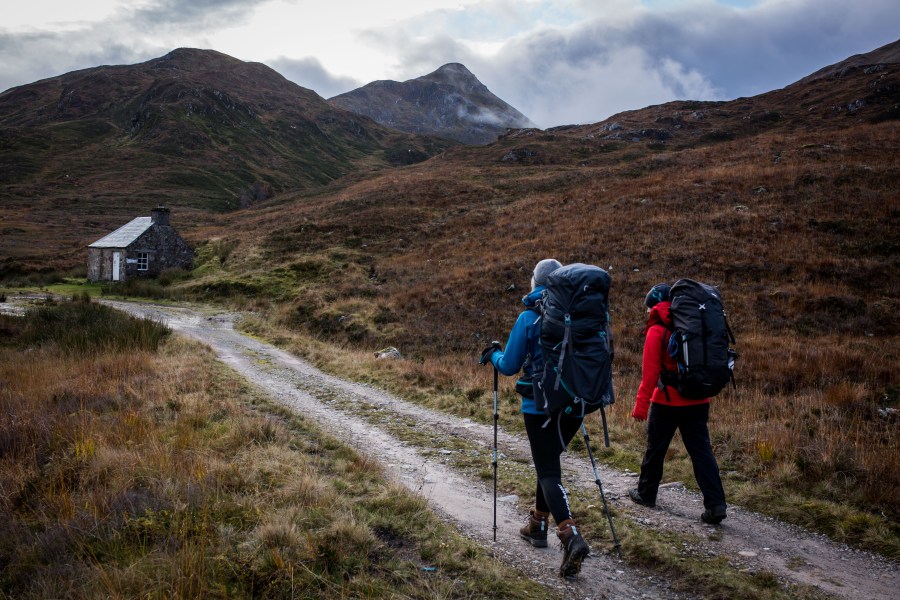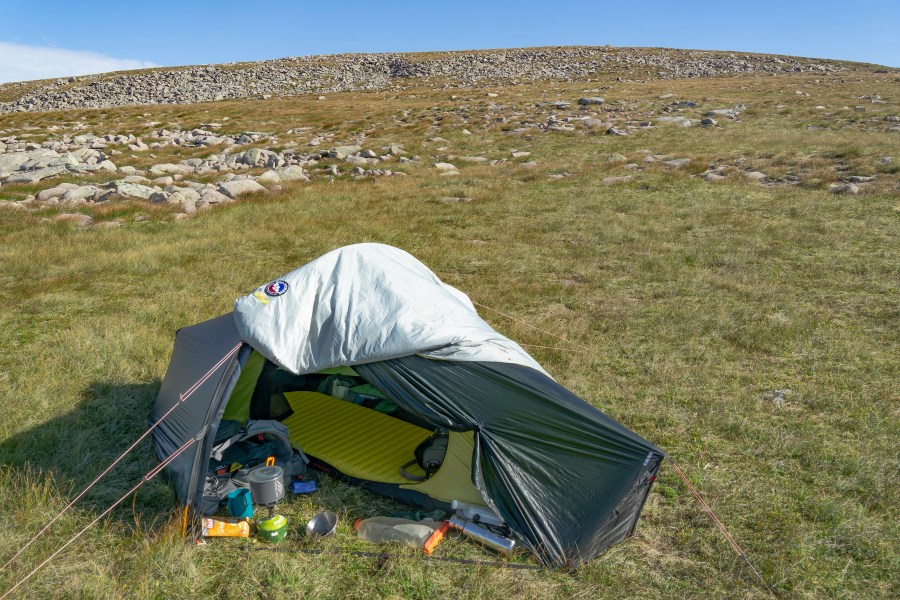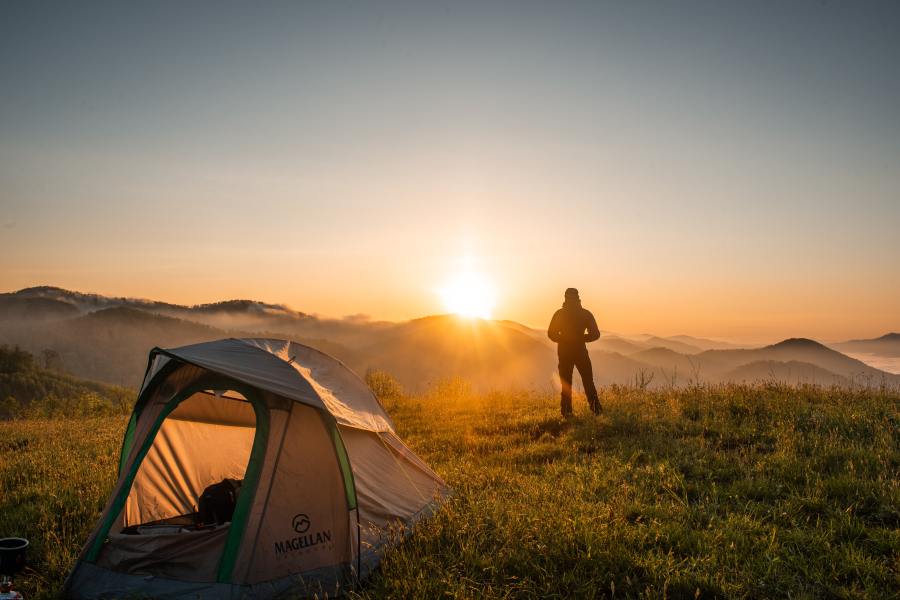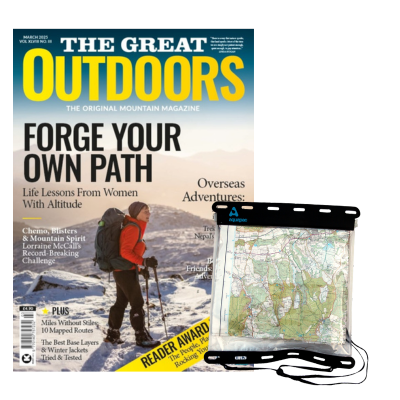Whether it’s weight, comfort or cost that’s putting you off, The Great Outdoors examines some alternatives to sleeping bags for wild camping.
You probably envision a cosy scene of a tent tucked into the mountainside and, invariably, a sleeping bag to curl up in and stay warm when you picture the ideal wild camp. This might seem like a necessary piece of equipment, and many content campers consider it a must-have in cold weather. However, different adventures might require something other than a sleeping bag. While we have reviewed the best sleeping bags, The Great Outdoors walks you through a number of alternatives here, in case a sleeping bag isn’t the right fit for you.
Words: Francesca Donovan | Main image credit: Cliford Mervil/Pexels
It’s worth noting that staying warm throughout wild camps is vital to prevent hypothermia. Learn more about sleeping bag ratings.
Why do alternatives to sleeping bags exist?
There are three main reasons you might be on the hunt for alternatives to sleeping bags.
1. Weight
If you want to cover many miles over a number of days, you might be seeking an ultralight system. While there are ultralight sleeping bags weighing under 2lbs on the market, you may find these add unnecessary weight to your pack in warmer months.
2. Comfort
Sleeping bags are designed to keep you warm through close insulation. This technology demands a tight fit, especially with narrow bags, and guarantees a warm night’s kip. If you’re prone to aches and need room to stretch out after a tough day in the hills, a sleeping bag may not suit you. Likewise, if you’re a warm-weather camper, you may overheat and experience discomfort in an insulating sleeping bag.
3. Cost
There’s no doubt that a good sleeping bag is a big investment. If you’re just starting your wild camping journey, and are heading out on warm summer nights, you might not want to spend a lot of money right away. It all depends on the adventure and its requirements.

Bothy-bound among the Grey Corries. Credit: Jessie Leong.
If you’re planning any cold weather camps, an insulating sleeping bag is an essential piece of gear, while those spending nights in bothies who are confident in their fire-starting skills may be able to safely opt for alternatives.
What are the alternatives to sleeping bags?
-
Sleeping bag liner
Typically, liners are used protect your sleeping bag itself from the wear and tear and grime of wild camping by placing them between your body and the sleeping bag. However, they can be used alone for an airy night’s sleep should the weather be warm enough. They are compact, lightweight, and easily washable but are unsuitable for cold nights.
-
Camping blankets
You might think blankets and quilts are essentially the same thing. But the term ‘camping blanket’ covers a much broader range of kit. Some of these are only suitable for the warmest nights spent outdoors and have little outdoor protective merit. Those designed for the outdoors are best used in conjunction with sleeping pads to give comfort and protection against cold, hard ground.
-
Camping quilts
Camping quilts are an excellent alternative to sleeping bags if you want to stay warm in mountain conditions and give yourself more room to move. Designed with a footbox, they act as a one-sided sleeping bag and have been found to be as effective when set up in conjunction with a sleeping pad protecting you from the cold floor. It’s worth noting that sleeping bags with a full-length zip can also be used as a quilt if you open the zipper.

Credit: Chris Townsend
-
Bivy bag
A bivy bag is a lightweight set-up solution used in place of a tent by those spending a minimalist night in the hills. With that said, in warm enough weather, there’s no reason you couldn’t use a bivy bag (or bivouac sack) instead of a sleeping bag. Some – especially those with reflective inner linings which retain warmth – can provide a comfortable night combined with a sleeping pad.
-
Camping cot
Designed to raise you off the cold ground, a camping cot can offer a comfortable place to lay your head when combined with various blankets, quilts, or a tarp as needed depending on the conditions and temperature. Of course, many opt to jump into their sleeping bags and onto their camping cots for the ultimate outdoor experience in awe under the stars on a dry night.
-
Insulated hammock
Another solution to raise you off the cold ground, an insulated hammock is a great option for a sheltered night in the woods during the warm season. While you can purchase hammocks in all shapes and sizes, insulated hammocks mostly come with built-in zips. This means you can spend the night with your body wrapped up rather than open to the elements. They won’t cut the mustard in the cold but there’s nothing like being rocked to sleep on a balmy summer evening.
There are plenty of alternatives to a sleeping bag, sometimes favoured by hardy wild campers or those who choose to camp only in warm weather. However, the most important takeaway before you venture out is to prepare for the conditions ahead. Oftentimes, that means investing in a good sleeping bag, fit for purpose, in order to stay warm and safe through a night outdoors.
If you find that sleeping bags are indeed your bag, you can learn how to choose a three-season sleeping bag and some tips for maintaining your sleeping bag from The Great Outdoors‘ experts.
Heading out on your first wild camp? Check out our campaign Q&As and wild camping tips:
Happy camping!








